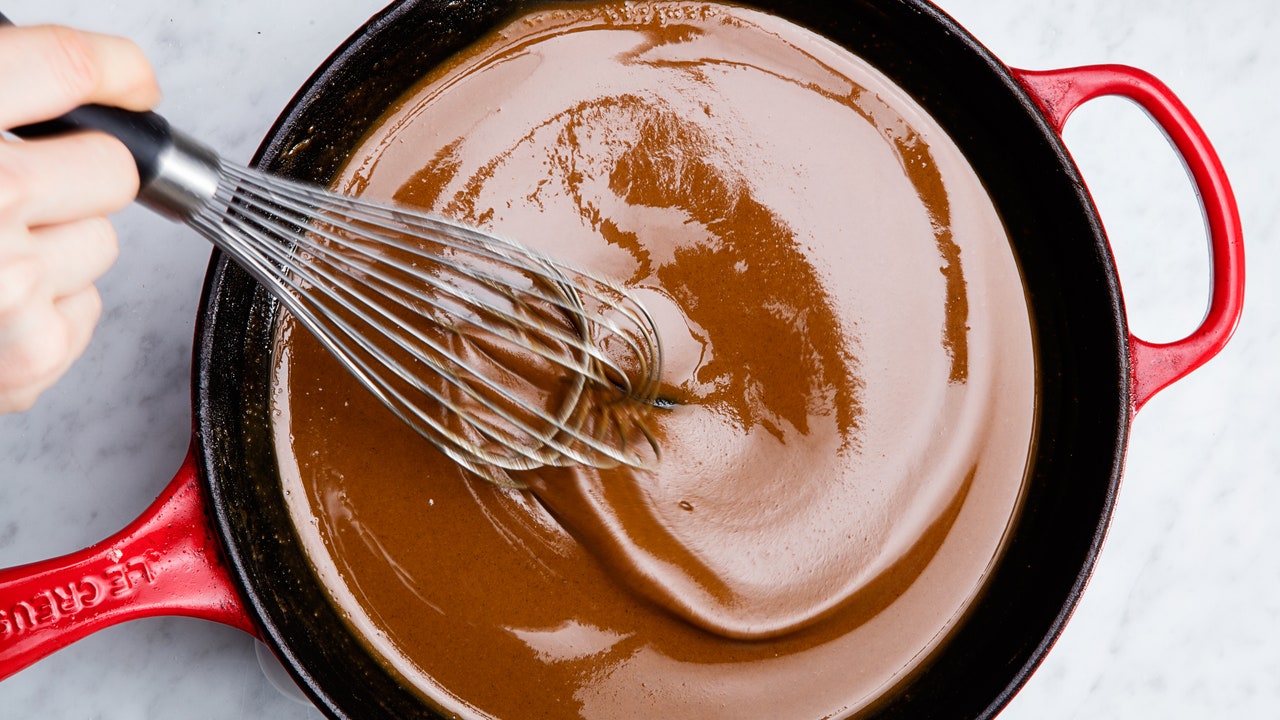If you’ve ever combined melted butter and flour over heat, congratulations: You’ve made a roux. While the name may make it sound intimidating, making a roux (pronounced “roo”) is relatively simple—all you need is fat, flour, heat, and time. But let’s start with the basics:
What is a roux?
A staple of Cajun, Creole, and French cuisines, roux is a seasoning and thickening agent made by combining fat and flour (usually in equal parts) over heat and whisking to make a thick paste. Roux forms the base for three of the five French mother sauces (velouté, espagnole, and béchamel) and many signature dishes of the American South, like gumbo, mac and cheese, and sausage gravy. It’s also a critical component of Thanksgiving turkey gravy.
Unlike a cornstarch slurry, roux must be cooked before adding hot liquid (otherwise the dish may retain the taste of raw flour). The longer a roux cooks, the less potent its thickening power, but what develops is a flavorful base that adds nutty, rich dimension to countless stews and sauces. This is why you’ll see roux cooked to varying levels of doneness, including white, blond, medium brown, and dark brown.
White roux cooks for the shortest amount of time (2–5 minutes) and functions primarily as a thickener in dishes like macaroni and cheese and clam chowder. On the other end of the spectrum, dark brown roux cooks for 30–45 minutes and acts as an integral seasoning in dishes like gumbo and étoufée. Most roux recipes call for all-purpose flour, but you could use any type of wheat flour for a basic roux. Want to make it gluten-free? Our gluten-free gravy uses sweet rice flour in place of wheat flour.
The fat is similarly flexible: Use butter, clarified butter, ghee, oil, or animal fat (like chicken schmaltz, duck fat, or pork lard). How do you decide which type of fat to use? It depends what dish you’re making and how long you’ll cook the roux. Butter adds great flavor, but since it has a lower smoke point than other fat sources (like vegetable or canola oil), it’s more likely to burn when used in a darker roux. “In a dark roux,” says New Orleans–based chef Justin Devillier, “I’ll mix butter with a high-heat oil” to keep the fat from scorching. “It’s really about preference; I know cooks who use all butter to make dark roux and the result [can be very] good.”
Many chefs use rendered fat from the protein used in the dish as the base for a roux. For example, the roux in this Chicken and Sausage Gumbo recipe relies on fat rendered from both the chicken and sausage.
What color roux should you use for your dish? Use a light roux when you want to thicken sauces (like béchamel) without adding much flavor; opt for a dark roux when you want the finished dish to have nutty, caramelized undertones. In Chef Paul Prudhomme’s Louisiana Kitchen, a resource on Cajun and Creole cuisine, Prudhomme writes that Cajun cooks traditionally use a light roux with dark meats (like beef, venison, or duck) and a dark roux with more delicate meats (pork, rabbit, veal, chicken, or seafood).
